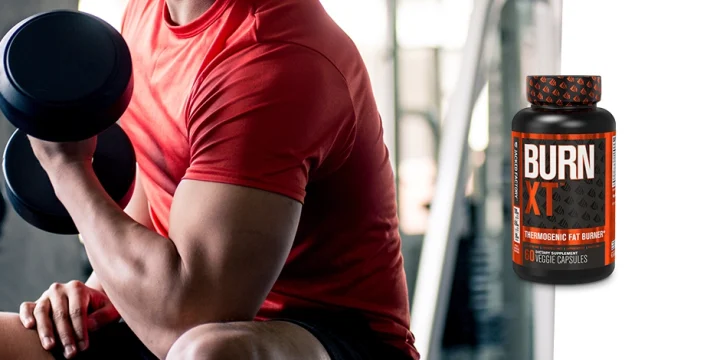Every time I see clients skip straight to weights without stretching, I'm reminded of the importance of a proper warm-up to avoid injuries, something I emphasize in my training sessions.
It is one way to increase your risk of some painful injuries. Also, it can severely impact the performance of your muscles.
We have even run some tests with clients to show them how much worse their muscles perform when they have not done pre-work exercises.
To help you improve your workout approach, we have put together some simple stretching routines.
Quick Summary
Our Full Body Stretching Routine
Here are four different areas that will help you gain more flexibility.
1. Leg Stretches
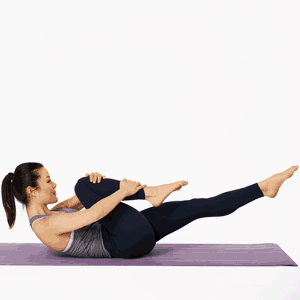
From my experience, isolating each leg muscle during workouts, especially for runners, is crucial for optimal performance and injury prevention.
Hamstring Stretch
I generally start my leg stretching with the hamstrings.
It’s a simple routine where you stand with your feet shoulder-width apart and then slowly let your body hang down, trying to reach your toes.
It’s a form of static stretching, which means you hold the stretch rather than bounce in and out of it.
You might also notice that it increases your blood flow into your arm muscles to help activate them.
Calf Stretch
For these, you want to stand about 3 feet away from a wall. Take one step forward and rest your hands on the wall.
Your back leg should remain straight, and as you push your hips forward, you’ll feel a stretch in your calf muscles.
Hold this for 30 seconds and switch to the other leg.
Related: Best Calf Exercises
Quad Stretch
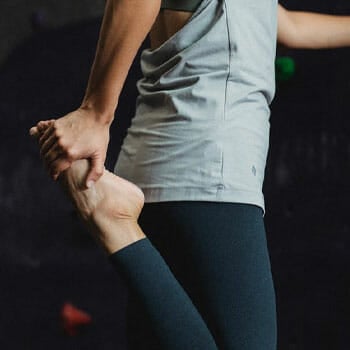
Here’s another easy stretch to do, but one you should never skip on a leg day.
Stand tall with both feet on the ground.
Lift one foot by bending your knee and then use your hand to pull it up to your buttocks.
The important thing is to keep your knees together and your torso vertical to maintain the stretch.
Hip Stretch
Many people who sit at desks all day have a limited range of motion in their hip flexors.
To increase your flexibility, get into a high-plank (aka push-up) position. Bring your left foot forward and place it flat on the ground next to and outside of your left hand.
Gently move your body back and forth to increase the stretch in your hips.
2. Arm Stretches
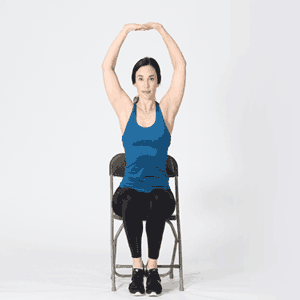
Any upper-body workout day will require some stretching of your arms, and the good thing is that it shouldn't take you long.
Biceps Stretch
Stand as close as you can to a wall and stretch out your right arm horizontally to the ground with your palm touching the wall.
Now, rotate your body away from the wall and feel a stretch in your shoulder and biceps. You might also feel this in your chest if you push far enough.
Triceps Stretch
The easiest way to target your triceps muscles is to lift your arm straight up over your head and then bend the elbow so your hand touches your shoulder.
Using your other hand, gently push your elbow back until you feel the stretching in your triceps.
We have an article on the best triceps stretches you can do to avoid injuries.
Forearm Stretch
Many people forget about their forearms, but they're vital for any workout that involves holding onto heavy free weights.
Hold one arm straight up in front of you with the palm facing up. With the other hand, grab your fingers and slowly pull them down while keeping your arm level and straight.
It doesn't take much to trigger a stretching sensation.
Related: Best Forearm Exercises
3. Back Stretches

Having seen clients sidelined by back injuries, I always emphasize the importance of back stretches to prevent such setbacks.
Here’s what you can do to avoid it.
Torso Rotation
The easiest back stretch you can do is to sit on the ground with your legs straight in front of you.
Bring your right foot up to your knee and place it flat on the ground on the other side of the knee.
Place your left elbow against the knee and twist your body to the right, using your arms to leverage and increase the stretch.
You should also feel this in your thighs and glutes.
Cat Stretches
Get onto all fours with your spine in a neutral position from your head to your buttocks.
Now, lift your head up and arch your spine down while pushing your buttocks up to exaggerate the arch. You can also pump up your chest with a deep inhale.
Next, lower your head and round your back in the opposite direction while pulling your hips in and squeezing your glutes.
Repeat this to increase natural spine mobility and avoid common back pain issues.
4. Shoulder Stretches
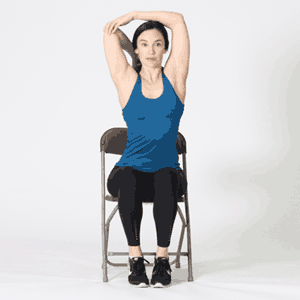
Some of the arm stretches will also target your shoulders, but there is one stretch that you should always do to support an increased range of motion in your shoulders.
Cross-Body Stretch
This is probably one of the first stretches any gym class will start with, as it’s so simple.
Stand up tall and then stretch your left arm across your chest and past your right shoulder.
Use your right arm to grab onto the extended one and push it closer to your body. You should immediately feel the stretching in your shoulder.
Child’s Pose
This is a yoga pose that you can use to stretch your upper back and shoulders.
Sit on your knees with the backs of your feet flat on the ground. Bring your chest down so that it rests on your thighs.
Now, extend both arms as far as you can, and use your fingers to try and pull them out further.
What’s The Difference Between Warm-Ups And Stretching?

As I often explain to my clients, the key difference between warm-ups and stretching lies in their impact on muscle preparation and flexibility.
A warm-up should be designed to gradually raise the temperature and blood flow in your muscles without adding too much strain.
Think of a bit of light running on a treadmill or some time on the elliptical.
Once you have warmed up your muscles, it’s time to stretch them, along with your ligaments, to gain more flexibility.
It’s important that you understand that the two work hand in hand and should never be considered one or the other.
“Stretching increases your range of motion and flexibility by lengthening soft tissues such as muscles and ligaments. It promotes fluid movement during athletic performance, decreases soreness, and minimizes injury.”
- HSS.edu.

Static Vs. Dynamic Stretches

In my experience, most of the stretches we've talked about are static, known for their effectiveness in holding positions for 30 seconds or more.
Dynamic stretching, as the Journal of Exercise Rehabilitation study points out, is quite different, involving active muscle work and a full range of motion, usually for less than 30 seconds [2].
These dynamic stretches vary the tension [3].
Honestly, while I have a preference for static stretches, incorporating dynamic movements can be advantageous, particularly for athletes in sports like basketball or sprinting, as indicated by the International Journal of Sports Physical Therapy [4].
For more information, check out our article on the main differences between dynamic and static stretching.
References:
- https://pubmed.ncbi.nlm.nih.gov/21735398/
- https://www.ncbi.nlm.nih.gov/pmc/articles/PMC5833972/
- https://www.hss.edu/article_static_dynamic_stretching.asp
- https://www.ncbi.nlm.nih.gov/pmc/articles/PMC3273886/
About The Author
You May Also Like

